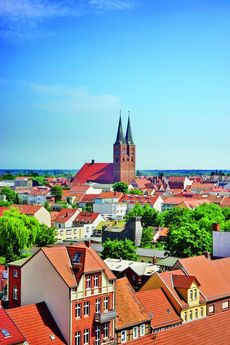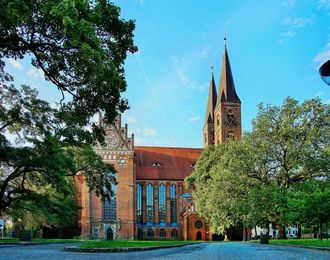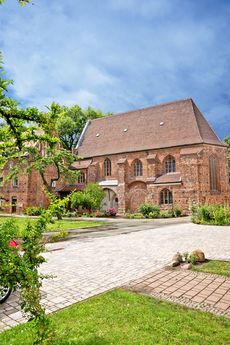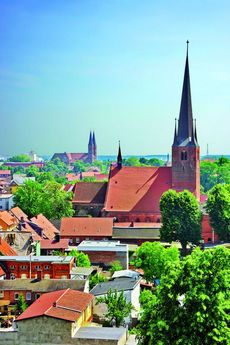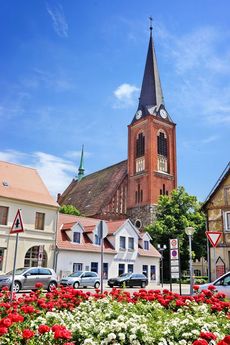ST. MARYS CHURCH
Our St. Marys Church, the church of the former aldermen and tradesmen, represented the centre of the city in ancient days. St. Marys Church was consecrated at Bartholomew’s Day 1447. The historic interior is almost original. Below the balcony of the organ you can see the precious astronomic clock that still works today. These special clocks can only be found in Hanseatic Cities. The treasure of the steeples are the 12 bells, the greatest peal of bells in the Altmark. Gerd van Wou, a famous master from the Netherlands, cast two of the bells, the “Maria” and the “Anna”. He is also creator of the great “Gloriosa” bell in the Dome of Erfurt.
DOME ST. NIKOLAUS
Dome St. Nikolaus is the most important and biggest ecclesiastic building of Stendal. St. Nikolaus holds a very unique circle of 22 medieval stained glass windows, an ensemble that is absolutely unique in the region. The church also keeps the biggest organ of the Altmark with 4343 voices that sound during the church service and concerts.
ST. ANNA
ST. PETRI
Our little church St. Petri shows objects such as the figures of the apostles (13th – 15th century), the high altar with carved statues of saints (14th – 16th century) and a baroque pulpit. The famous son of our city, Johann Joachim Winkelmann, was baptised here on 12th December 1717. St. Petris peal holds a precious bell cast by Gerd von Wau in 1490.
ST. JACOBS
Significant parts of the medieval furnishings of the parish church of St. Jakobi have been preserved. The choir has six windows with stained glass from the 14th and 15th centuries. The windows show the twelve apostles, scenes from legends of saints, the Passion of Christ, and post-medieval coats of arms of Stendal citizens from 1581. In St. Jacobs the valuable furnishings show the importance and wealth of the old Hanseatic city, too. The carved choir screen belongs to the 1st quarter of the 16th century. In the choir there is a carved choir stalls from around 1420/30 and on the north side of the choir there is a built-in cabinet with flat carvings from around 1500. A special work of art is the sandstone pulpit from 1612 by Hans Hacke from Werben in the Altmark. The life-size carrying figure depicts Jacobus the Elder as the patron saint of pilgrims with the pilgrim's symbol on his hat, the shell. There are also a large number of interesting tombstones and epitaphs in this church. The previous building of the church St. Jacobs was a Romanesque field stone building, probably the oldest church of Stendal: village church of the former village of Steinedal.






